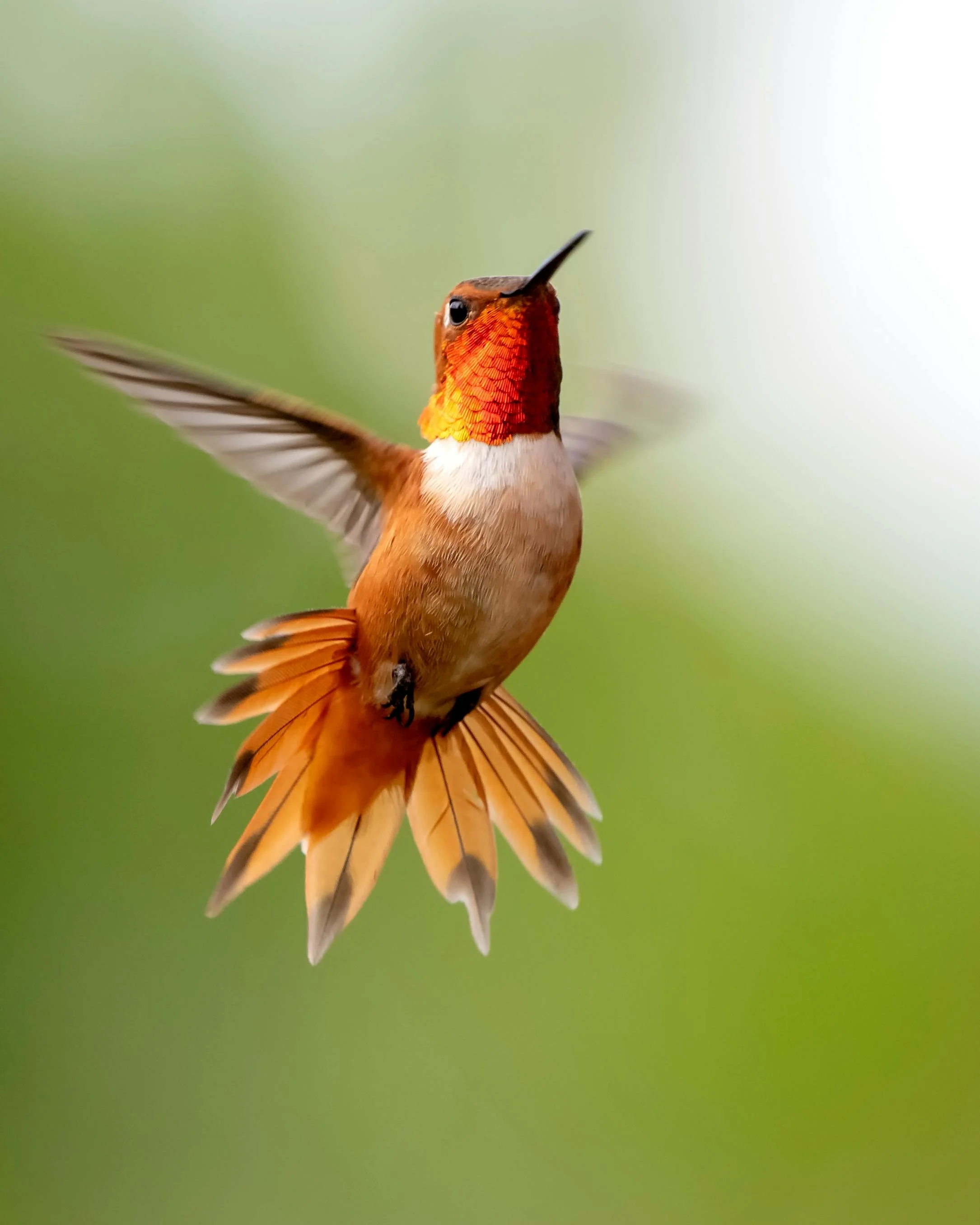How to Attract Hummingbirds to Your South Bay Garden: A Guide to Nature’s Tiny Jewels
Hummingbirds are some of the most enchanting and magical creatures you can invite into your yard. These tiny birds—often weighing less than a nickel—bring a burst of color, energy, and wonder to any garden. In the South Bay and greater Los Angeles area, we’re lucky to have an environment that hummingbirds love, with mild winters and an abundance of plants that bloom almost year-round. With a few simple steps, you can transform your yard into a hummingbird haven and enjoy daily visits from these remarkable creatures.
Why Hummingbirds Are So Wonderful
Hummingbirds are nothing short of nature’s marvels:
Masters of Flight: They’re the only birds that can hover, fly backward, and even upside down, thanks to their rapid wingbeats (up to 70 times per second!).
Living Jewels: Their iridescent feathers shimmer in the sunlight, changing colors like precious gems.
Nature’s Pollinators: As they feed on nectar, hummingbirds play a critical role in pollinating many native plants and flowers.
Fascinating Behaviors: Watching their bold aerial dances, territorial displays, and delicate feeding habits is like witnessing a ballet in midair.
Steps to Attract Hummingbirds in the South Bay
1. Plant Native and Nectar-Rich Flowers
Hummingbirds are drawn to tubular flowers that produce natural nectar. In Southern California, consider these favorites:
California fuchsia (Epilobium canum)
Salvias (Autumn Sage, Mexican Sage)
Coral bells (Heuchera)
Trumpet vine (Campsis radicans)
Penstemon
Bougainvillea
Aim for a mix of blooms that flower in different seasons, ensuring a year-round buffet.
2. Hang Hummingbird Feeders
Fill feeders with a simple homemade nectar solution:
1 part white granulated sugar
4 parts water
Boil and cool before use.
Do not add red dye—the feeder’s color is enough to attract them. Clean and refill feeders every 3-4 days (more often in hot weather) to prevent fermentation and mold.
3. Create a Water Feature
Hummingbirds love to bathe in fine mists or shallow fountains. A misting attachment or a small, gentle water bubbler can be irresistible to them, especially during warm South Bay afternoons.
4. Provide Perches and Shelter
Hummingbirds need spots to rest and observe their territory. Plant shrubs, small trees, or native bushes near your feeding and flowering areas. Open perches give them a vantage point for spotting intruders or just enjoying the sunshine.
5. Avoid Pesticides
Hummingbirds rely on small insects and spiders for protein, especially during nesting season. Keeping your yard pesticide-free ensures a healthy insect supply and safe feeding environment.
The Joy of a Hummingbird-Friendly Yard
Once your garden becomes a hummingbird hotspot, you’ll find these little visitors bring endless delight:
Their bold personalities: Hummingbirds often zip close to humans, curiously hovering just inches away.
Daily entertainment: Their quick dives, sudden stops, and sparkling flashes of color create an ever-changing show.
Peaceful moments: Watching a hummingbird gently sip from a flower can be a meditative, stress-relieving experience.
Environmental rewards: By supporting hummingbirds, you’re also helping pollinate plants and sustain local ecosystems.
Why You’ll Be Thrilled
Creating a hummingbird-friendly yard turns your outdoor space into a living sanctuary of motion, color, and wonder. These incredible creatures will not only brighten your garden but also deepen your connection to nature. Imagine sipping your morning coffee while a dazzling Anna’s hummingbird hovers nearby, or hosting friends as these winged jewels dart between flowers like flashes of rainbow light.


